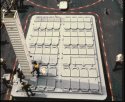Jura The idiot
General
related:"... somewhere between 2022 and 2023 ..."
Air Force will move off Russian engines, general says
source:
USAF: Cost Of RD-180 Termination Uncertain
source:The head of U.S. says there is no sure way to estimate the cost of a shift away from the Russian-built RD-180 rocket engine for national security space launches, because it is unclear what shape the U.S. launch industry will be in when the transition is completed in the early 2020s.
“The number is going to be in the billions; there’s no doubt about that,” Gen. John Hyten told the House Armed Services strategic forces subcommittee March 15. “But exactly where it comes out I don’t know. So planning for uncertainty is not a good place to be.”
Hyten said uncertainty about the way forward in the U.S. launch industry is behind his service’s wide range of estimates of the cost of a shift away from the RD-180, which powers the workhorse Atlas V. Air Force Secretary Deborah James has told the Senate Armed Services Committee the figure could be as low as $1.5 billion, or as high as $5 billion.
“In reality, we don’t know what that will cost us,” Hyten said. “The reason we don’t know what it will cost us, and the estimates are so huge, is because we have so many assumptions about what the future’s going to look like. Are we going to have a Falcon 9 Heavy in the interim period between 2019 and 2022? What is the industry going to look like between ’19 and ’22? All of those questions we don’t know the answer to.”
The service is in a showdown with Sen. John McCain (R-Ariz.), who chairs Senate armed services panel in his legislative chamber, over the Russian engine. The Air Force wants 18 RD-180s over the next five years. But McCain, who is also at odds with key members of the Senate Appropriations Committee, wants to ban imports of the Russian engines altogether.
If that happens, Hyten said, the Air Force will not be able to launch Space Based Infrared System (SBIRS) missile-warning satellites or Advanced Extremely High Frequency () jam-resistant military communications satellites until they can be adapted to launch on United Launch Alliance’s other vehicle, the Delta IV.
“We’d have to do the engineering analysis, and maybe reconfigure those satellites, and reconfigure the interfaces to do that, which means we’ll have to store AEHF and SBIRS for a certain period of time,” Hyten testified. “All that costs us money in the near years. Then Delta will be more expensive. There’s no doubt Delta will be more expensive.”
Hyten said the Air Force believes there can be alternate launch vehicles flying with the Blue Origin BE-4 and the Rocketdyne AR1 engines by 2022-23, based on new contracts to support integration of the developmental engines and “the progress made by those two companies.” The delay, while expensive, will allow the service and other national security launch customers time to make the necessary adjustments in their payloads, which could lower the cost.
“The implications to us are the same that the Air Force has, and I think one of the big things will be the timing,” said Frank Calvelli, principal deputy director of the National Reconnaissance Office. “So for example, I’ve got unique vehicles that were designed around flying on an Atlas. If I was told, like, tomorrow, they could not go on an Atlas, the cost would be higher. If it’s a gradual transition over a period of years, the cost would be lower, so it all depends on the time frame of the decision.”




